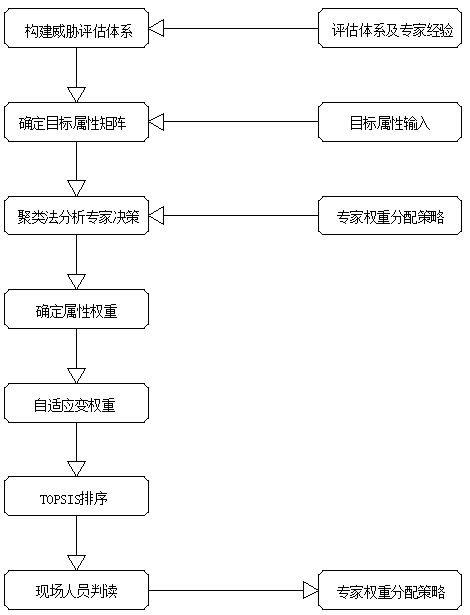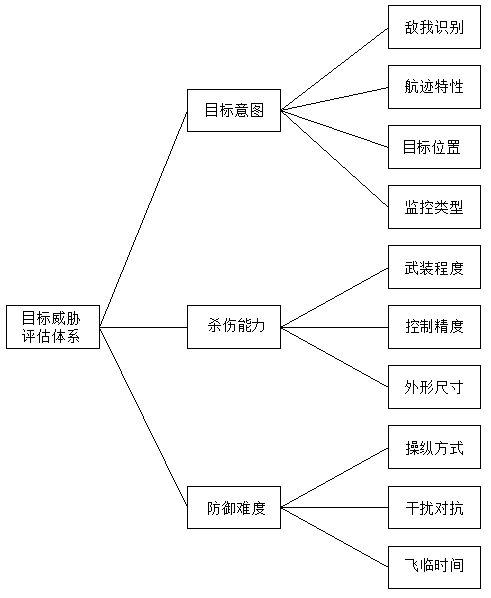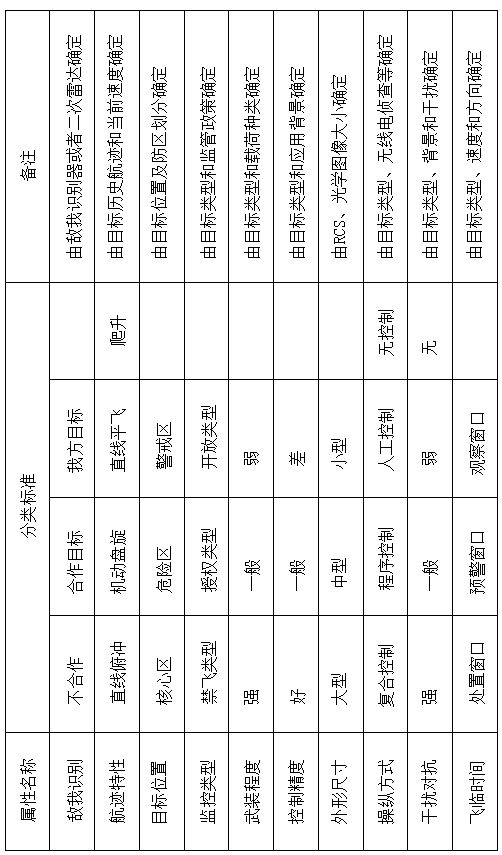Threat assessment method for low, slow and small targets
A low-slow and small-target, target technology, applied in complex mathematical operations, instruments, characters and pattern recognition, etc., can solve problems such as poor threat assessment effect, large differences in application backgrounds, and inability to use sorting, to make up for blind spots and defects. , to ensure accuracy and robustness, to improve the effect of accuracy and reliability
- Summary
- Abstract
- Description
- Claims
- Application Information
AI Technical Summary
Problems solved by technology
Method used
Image
Examples
Embodiment Construction
[0040] The following is a further detailed description of the implementation of the "low, slow, small target" threat assessment method in conjunction with the accompanying drawings (see Figure 1~3 ):
[0041] The "low, slow, small target" threat assessment method, based on the multi-level analysis method, constructs a set of network assessment system for "low, slow, small target" - the threat assessment system; then selects and optimizes the expert experience data, and finally Adaptively change the weight of the battlefield situation, calculate and output the threat level of the target through the TOPSIS method; its characteristic is: the threat assessment method for "low, slow and small targets" is realized by including the following steps:
[0042] 1. Construct a threat assessment system for "low, slow and small targets" through the consistent judgment method, clustering method, adaptive variable weight method, and TOPSIS method, and create quantitative standards for its in...
PUM
 Login to View More
Login to View More Abstract
Description
Claims
Application Information
 Login to View More
Login to View More - R&D
- Intellectual Property
- Life Sciences
- Materials
- Tech Scout
- Unparalleled Data Quality
- Higher Quality Content
- 60% Fewer Hallucinations
Browse by: Latest US Patents, China's latest patents, Technical Efficacy Thesaurus, Application Domain, Technology Topic, Popular Technical Reports.
© 2025 PatSnap. All rights reserved.Legal|Privacy policy|Modern Slavery Act Transparency Statement|Sitemap|About US| Contact US: help@patsnap.com



